Explore Weight Loss Treatments


Tirzepatide vs. Ozempic: Key Differences & Similarities
Choosing between Tirzepatide and Ozempic? You’re not alone. Many people see greater weight loss on Tirzepatide, while others with type-2 diabetes stick with Ozempic (it is not approved for weight loss by the FDA) for insurance coverage or better day-to-day tolerance.
In this guide, we’ll compare how they work (GLP-1+GIP vs GLP-1), what to expect for results and side effects, and the practicals of dosing, cost, and coverage. By the end, you’ll know which option fits your goals, budget, and weekly routine.
What is Tirzepatide?

Tirzepatide is a once-weekly injection used for weight management and type 2 diabetes. It targets two gut-hormone receptors, GLP-1 and GIP, to help you feel full on smaller portions, slow stomach emptying, and improve post-meal glucose control.
How it Tirzepatide works
- GLP-1: earlier fullness. Steadier post-meal glucose.
- GIP: reinforces fullness signals. Supports how your body processes dietary fat.
Tirzepatide aids weight loss by reducing appetite, slowing digestion for lasting fullness, and improving insulin sensitivity to lower fat storage.
For a detailed comparison of weight loss medications, check out our guide on semaglutide vs tirzepatide weight loss.
What is Ozempic?
Ozempic (semaglutide) is an FDA-approved GLP-1 receptor agonist primarily prescribed for Type 2 diabetes management.
While initially developed for blood sugar control, many patients experience significant weight loss as a beneficial side effect.
This once-weekly injection has become a household name in diabetes care, establishing itself as a trusted treatment option for millions of patients worldwide.
How Ozempic works
Ozempic works by mimicking the GLP-1 hormone, which your body naturally produces in response to food. It stimulates insulin release when blood sugar levels are elevated, suppresses glucagon production, and slows gastric emptying.
These combined effects result in better blood sugar control and reduced appetite.
Learn more about the relationship between compounded versions and brand-name options in our article on compounded semaglutide vs Ozempic.
Tirzepatide vs Ozempic: Key Differences
Understanding the distinctions between these medications helps you make the right choice for your health goals.
Mechanism of Action
Here’s an overview of what each peptide does:
Tirzepatide
- Activates GLP-1 and GIP.
- Enhances satiety signals.
- Slows gastric emptying.
- Supports lipid handling and insulin response.
Ozempic (semaglutide)
- Activates GLP-1.
- Slows gastric emptying.
- Lowers hunger signals.
- Improves post-meal glucose control.
Effectiveness for Type 2 Diabetes
Both medications can support diabetes management, but clinical trials show tirzepatide delivers stronger results.
Here’s how each peptide can help people living with type 2 diabetes:
Tirzepatide
- HbA1c reduction: Achieves 2.4% average reduction in glycated hemoglobin levels.
- Time to target: Helps more patients reach HbA1c goals of <7% within 6 months.
- Insulin sensitivity: Dual-receptor activation improves insulin function more effectively.
- Beta-cell preservation: May offer better long-term pancreatic function support.
Ozempic
- Consistent HbA1c improvements: Delivers a reduction in blood sugar markers
- Cardiovascular protection: Proven to reduce major cardiovascular events in diabetes patients
- Kidney protection: Currently the only FDA GLP-1 type drug approved to reduce the risk of worsening kidney disease in Type 2 diabetes patients
- Long-term data: Extensive real-world evidence supporting its diabetes management efficacy
Explore more about compound options at compound semaglutide vs Ozempic.
Effectiveness for Weight Loss
Weight loss represents the most dramatic difference between these medications.
Tirzepatide
- Superior weight loss: Clinical trials show 20.2% average weight loss versus 13.7% with semaglutide
- Faster onset: Many patients notice appetite changes within the first two weeks
- Sustained results: Weight loss continues throughout the treatment period with proper dosing
- Higher completion rates: Better tolerability may lead to improved treatment adherence
Ozempic
- Proven weight management: Consistent 10-15% weight loss in clinical and real-world settings (Ozempic is not FDA approved for weight loss)
- FDA approval: While Ozempic is not FDA approved for weight loss, Wegovy (same compound) has specific approval for weight loss treatment
- Gradual but steady: Weight loss occurs consistently over 6-12 month periods
- Maintenance support: Helps patients maintain weight loss when combined with lifestyle changes
Take the first step toward your weight-loss goal with personalized GLP-1 injections.
Dosage Administration
Tirzepatide
- Start 2.5 mg once weekly for 4 weeks.
- Increase every 4 weeks as tolerated to 5, 7.5, 10, 12.5, or 15 mg.
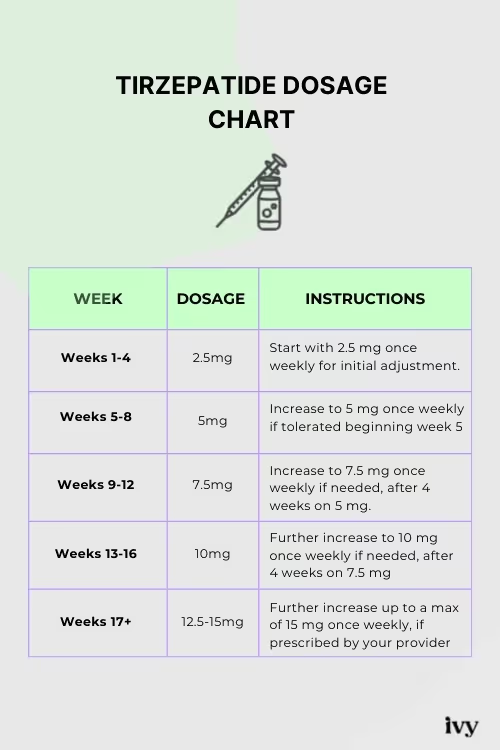
Ozempic (semaglutide)
- Start 0.25 mg once weekly for 4 weeks.
- Increase to 0.5 mg, then 1 mg, up to a maximum of 2.4 mg as needed.
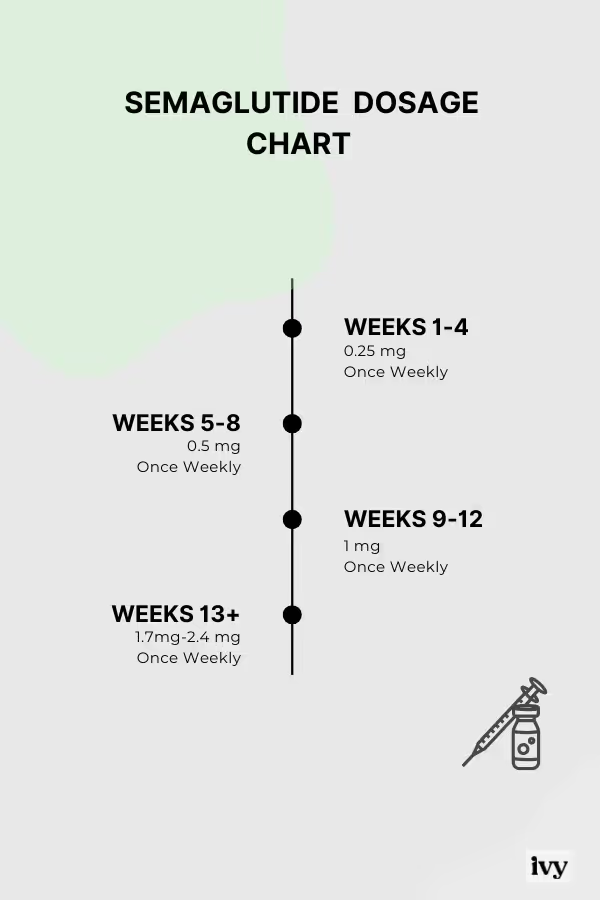
Tirzepatide treatment consists also of once-weekly injections, but doses range from 2.5 mg to 15 mg, requiring careful adjustments when transitioning.
Pro Tip: If side effects linger, hold your dose or step back one level. Never double up to make up a missed dose.
For detailed dosing information, visit our tirzepatide dosage chart.
Benefits and Side Effects
Understanding the complete benefit and risk profile helps set realistic expectations for treatment.
Primary benefits
- Tirzepatide: larger average weight loss plus strong glucose and lipid support.
- Ozempic: reliable diabetes control with established long-term safety data.
Common side effects for both tirzepatide and Ozempic
- Gastrointestinal: Nausea, vomiting, diarrhea, constipation, bloating, indigestion, acid reflux, or early fullness.
- Systemic: Fatigue, mild headache, dizziness.
- Other: Injection site redness or itching, mild abdominal discomfort, or belching.
These side effects are usually mild to moderate and often improve over time. Eating smaller meals, avoiding high-fat foods, staying hydrated, and following a gradual dose increase can help minimize symptoms.
Less common but important
- Tirzepatide: watch for pancreatitis symptoms or gallbladder issues.
- Ozempic: boxed warning about thyroid C-cell tumors in animals. Avoid if you have a personal/family history of MTC/MEN2.
Learn more about the benefits and risks of Ozempic, Ozempic benefits and side effects and tirzepatide side effects.
Cost and Insurance Coverage
Since these treatments require ongoing use, it’s essential to understand the cost so you can choose an option that fits your budget without added stress.
Skip insurance hassles with our affordable online personalized GLP-1 injections - transparent pricing with no hidden fees starting at $179 a month.
For comprehensive cost analysis, read our tirzepatide cost guide.
Similarities Between Tirzepatide and Ozempic
Despite their differences, these medications still have some of the same characteristics on display:
- Weekly injection schedule: Both require once-weekly subcutaneous administration for optimal convenience
- Refrigeration requirements: Both medications must be stored properly to maintain potency and safety
- Dose escalation protocols: Gradual dose increases minimize gastrointestinal side effects and improve tolerance
- Prescription-only status: Both require healthcare provider supervision and cannot be purchased over-the-counter
- Similar administration technique: Both use pre-filled pens with simple injection procedures • Treatment duration: Both are intended for long-term chronic disease management rather than short-term use
- Lifestyle integration: Both work best when combined with proper diet and exercise modifications
How to Choose the Best Option
Selecting the correct medication depends on your health profile and treatment priorities.
Consider Your Primary Goal
For weight loss-focused patients, Tirzepatide demonstrates superior weight loss outcomes with a 20.2% average reduction compared to Ozempic's 13.7%.
If significant weight reduction is your primary objective, tirzepatide's dual-action mechanism provides enhanced appetite suppression and metabolic benefits.
Evaluate Your Diabetes Management Needs
For diabetes patients, while both medications excel in blood sugar control, consider your cardiovascular risk profile.
Ozempic offers proven heart and kidney protection benefits that may be crucial if you have existing cardiovascular disease or diabetic complications.
Assess Your Financial Situation
Check your insurance, savings programs, and long-term costs — Ozempic often has broader diabetes coverage, while tirzepatide coverage for weight loss is still limited.
You can find the best injections for weight loss ← in our in-depth guide.
Can You Take Tirzepatide and Ozempic Together?
No, Ozempic and Tirzepatide should not be taken together. Both medications work by mimicking GLP-1, a hormone that regulates appetite and blood sugar.
Since tirzepatide already targets both GLP-1 and GIP receptors, combining it with semaglutide does not provide additional benefits and may increase the risk of severe side effects such as nausea, vomiting, and digestive discomfort.
Learn about medication transitioning in our guides: Wegovy, Ozempic, and Mounjaro comparison, switching from Ozempic to Mounjaro, and semaglutide vs Mounjaro.
Warnings and Precautions
Both tirzepatide and Ozempic require medical supervision, especially if you have certain health conditions. You should avoid or use these treatments with caution if any of the following apply.
Tirzepatide
- Thyroid concerns: May increase risk of thyroid C-cell tumors; avoid if personal or family history of medullary thyroid carcinoma
- Pancreatitis risk: Discontinue immediately if severe abdominal pain develops
- Gallbladder disease: Monitor for gallstones, especially with rapid weight loss
- Hypoglycemia: Risk increases when combined with insulin or sulfonylureas
- Kidney function: Use cautiously in patients with severe kidney disease
- Pregnancy category: Not recommended during pregnancy or breastfeeding
Ozempic
- Black box warning: Potential thyroid tumor risk based on animal studies
- Diabetic retinopathy: May worsen existing eye complications in diabetes patients
- Severe gastroparesis: Can worsen delayed gastric emptying conditions
- Acute kidney injury: Monitor kidney function, especially during illness or dehydration
- Allergic reactions: Discontinue if severe hypersensitivity reactions occur
- Drug interactions: May affect the absorption of oral medications due to delayed gastric emptying
For medication switching guidance, read switching from Mounjaro to semaglutide.
Start Your Weight Loss Journey With Ivy Rx Today!
The choice between tirzepatide and Ozempic doesn't have to be overwhelming. Whether you prioritize maximum weight loss with tirzepatide's superior 20.2% reduction or prefer Ozempic's established cardiovascular benefits, the proper medication can transform your health journey.
At Ivy Rx, we provide personalized treatment plans tailored to your specific goals, health profile, and budget. Our expert medical team guides you through the decision-making process and ensures you receive the most effective treatment for your needs.
Start your weight loss transformation today with personalized GLP-1 injections, including a free consultation.

Ivy RX patients
Members of Ivy RX branded medications were paid for their testimonials.
- https://www.nejm.org/doi/full/10.1056/NEJMoa2107519. Accessed 14th August, 2025
- U.S. Food and Drug Administration. (2024). FDA's Concerns with Unapproved GLP-1 Drugs Used for Weight Loss. https://www.fda.gov/drugs/postmarket-drug-safety-information-patients-and-providers/fdas-concerns-unapproved-glp-1-drugs-used-weight-loss.
- Jensen TL, Brønden A, Karstoft K, Sonne DP, Christensen MB. The Body weight Reducing Effects of Tirzepatide in People with and without Type 2 Diabetes: A Review on Efficacy and Adverse Effects. Patient Prefer Adherence. 2024 Feb 8;18:373-382. https://pmc.ncbi.nlm.nih.gov/articles/PMC10861994/. doi: 10.2147/PPA.S419304.
- https://www.nejm.org/doi/full/10.1056/NEJMoa2416394. Accessed 14th August, 2025.
Related
articles

15 Celebrities Who Took Ozempic for Weight Loss (& Results!)
See which celebrities have publicly confirmed using Ozempic or other GLP-1s—plus what they’ve said about their experience and results.
%20(1).jpg)
Microdosing GLP-1 Reviews: Real User Results, Experiences, Side Effects & Costs
Curious whether GLP-1 microdosing works? See real user reviews on results, appetite changes, side effects, and costs—plus who benefits most from microdosed semaglutide and tirzepatide.
%20(2).jpg)
Microdosing GLP-1 Cost: Complete 2026 Pricing Guide
See how much GLP-1 microdosing costs in 2026, including monthly pricing ranges, what affects the price, and ways to lower costs safely.

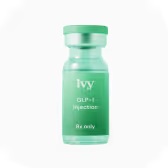





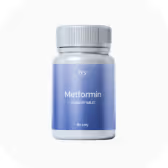

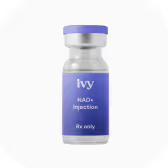



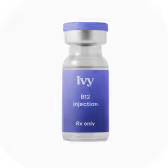
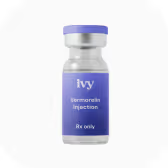

.avif)

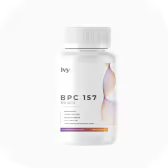

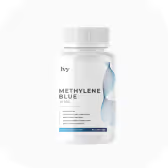


.png)


